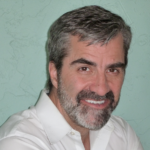Thirty-nine years ago a frightening best-seller written by Rachel Carson, titled Silent Spring, dramatically changed the direction of the environmental movement in the U.S. and worldwide.
The book compared modern chemicals used for pest control to “an evil spell,” “witchcraft,” and “poison rain.” “For the first time in the history of the world,” Carson wrote, “every human being is now subjected to contact with dangerous chemicals, from the moment of conception until death.”
Carson’s book was widely disparaged by scientists and health experts at the time of its release, and rightly so. There was no evidence of a rising tide of illnesses caused by man-made chemicals and no convincing theory explaining how man-made chemicals–often far safer than the “natural” chemicals they replaced in agriculture and food processing–would cause such a trend. In particular, the chemical Carson attacked most fiercely–DDT–was almost universally regarded as not only safe, but a lifesaving miracle pesticide.
Silent Spring marked the environmental movement’s long and unproductive romance with chemophobia, the irrational fear of man-made drugs. “Environmentalism” became the label of convenience for a collection of movements, none of them especially pro-human or pro-environment. The environmentalism umbrella covered anti-technology, anti-private property, anti-risk, anti-mobility, anti-development, and pro-animal rights, pro-population control, and pro-one-world government.
The turn of the millennium marks an important milestone in the trip back from chemophobia. In late December, the United Nations rejected a proposed worldwide ban on the production and use of DDT. Scientists and medical experts around the world rallied to defend a chemical whose use to combat malaria and other insect-borne diseases has saved the lives of hundreds of millions of people. DDT’s environmental effects–on birds, fish, and other forms of wildlife–are also being reconsidered, and generally being found to be far more benign than once thought.
The articles in this Special Report describe some of the science behind the successful defense of DDT, revealing that victory as part of a broader retreat from chemophobia. Policymakers and the public are learning that similar re-evaluations are taking place regarding PCBs and exposure to low levels of radiation. As James Gattuso reports in the essay that follows, the world really is getting safer and cleaner over time, and technology, property rights, and free enterprise can claim most of the credit.
Will this trend continue? Leaders of the nation’s business community are moving decisively in the right direction, supporting peer-reviewed science and market-based solutions to environmental problems. (See “Blueprint for New-Era Environmentalism.”) Early word from the Bush administration is also promising, with key leaders promising less time and resources devoted to “chasing the last molecule” of suspected toxic chemicals, and more to addressing known threats.
In the final chapter of Silent Spring, Carson wrote that “we stand now where two roads diverge.” At the end of one lay “disaster,” while at the end of the other–her preferred path of chemophobia–lay “the preservation of our earth.” Carson was correct that a choice needed to be made. Four decades later, we now know for certain that she chose for us the wrong path.
Joseph Bast is president of The Heartland Institute and founding publisher of Environment & Climate News.




